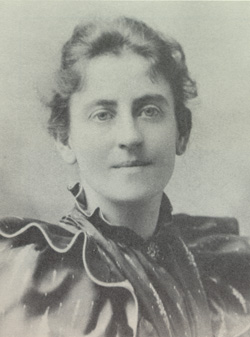The text of Sister Carrie has gone through many hands not only before but also since it was first published by Doubleday, Page & Co. in 1900. Among the first to edit the manuscript were Dreiser's wife Jug and his friend Arthur Henry. In the manuscript--which Dreiser gave to H. L. Mencken, who later donated the item to The New York Public Library--Jug's editing tended toward corrections to grammar, spelling, and the like, although she also made changes for the sake of propriety (for example, references to Carrie's "corsets" and "body" were removed in manuscript Chapter XVI). Henry's edits often entailed major revisions (Henry was also responsible for the abridgement of the text for Heinemann Dollar Library of American Fiction). In the typescript, held by the Rare Book & Manuscript Library of the University of Pennsylvania, one finds the hands of Dreiser, Henry, and Jug, together with some marginal blue-pencilling by an editor at Doubleday--though this editor wrote no words on any leaf. Dreiser's hand is most readily identifiable: he writes a backhanded script, not easy to read, with no loop in his p's and with the crosses for his t's inscribed to the right of the downstroke. Henry has a rather sprawling hand with a characteristic turning-down of the terminal stroke on the letter d. Jug's right-slanting letters, on the other hand, are formed conventionally, and her script is smaller and tighter than Henry's.
For the better part of the twentieth century the text of Sister Carrie remained in the compromised form--cut and bowdlerized--in which it had originally been published in 1900. A new British typesetting appeared from Constable in 1927, and a fresh American typesetting was issued by Heritage Press in 1939, but neither edition restored the cut and censored material. Finally in 1981, a scholarly edition of Sister Carrie from the University of Pennsylvania Press returned to Dreiser's manuscript as copy-text and, relying on the evidence of cutting and bleaching from the Penn typescript, restored most of the deleted passages and the unrevised language.
Fig. 1: At the time that Dreiser was working on the manuscript of Sister Carrie in New York, his friend Arthur Henry had become enamored with Anna Mallon, who owned her own stenography and typewriting agency on Broadway. On the one hand, Henry's romantic adventure with Anna (who later became his second wife) kept him unavailable to Dreiser; on the other hand, Anna T. Mallon & Co. provided Dreiser with reasonable rates for preparing a typescript ofSister Carrie from manuscript. The typists found Dreiser's hand difficult to decipher, creating some transcription errors. In addition, there were some "missed" lines, when a typist lifted her eyes off the manuscript only to return to it at the wrong place. Dreiser caught some of these mistakes but rarely corrected them based on his original manuscript. He tended instead to amend "on the spot," creating yet another version of the text.
